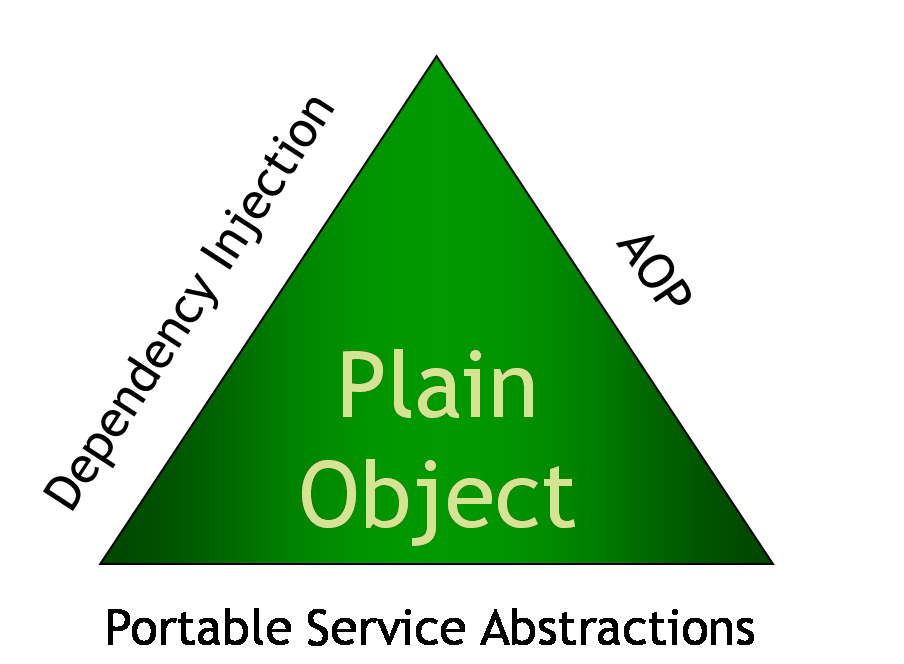The goal of Spring's integration with distributed technologies is to adapt plain .NET objects so they can be used with a specific distributed technology. This integration is designed to be as non-intrusive as possible. If you need to expose an object to a remote process then you can define an exporter for that object. Similarly, on the client side you define an corresponding endpoint accessor. Of course, the object's methods still need to be suitable for remoting, i.e. coarse grained, to avoid making unnecessary and expensive remote calls.
Since these exporters and client side endpoint accessors are defined using meta data for Spring IoC container, you can easily use dependency injection on them to set initial state and to 'wire up' the presentation tier, such as web forms, to the service layer. In addition, you may apply AOP aspects to the exported classes and/or service endpoints to apply behavior such as logging, security, or other custom behavior that may not be provided by the target distributed technology. The Spring specific terminology for this approach to object distribution is known as Portable Service Abstractions (PSA). As a result of this approach, you can decide much later in the development process the technical details of how you will distribute your objects as compared to traditional code centric approaches. Changing of the implementation is done though configuration of the IoC container and not by recompilation. Of course, you may choose to not use the IoC container to manage these objects and use the exporter and service endpoints programatically.
The diagram shown below is a useful way to demonstrate the key abstractions in the Spring tool chest and their interrelationships. The four key concepts are; plain .NET objects, Dependency Injection, AOP, and Portable Service Abstractions. At the heart sits the plain .NET object that can be instantiated and configured using dependency injection. Then, optionally, the plain object can be adapted to a specific distributed technology. Lastly, additional behavior can be applied to objects. This behavior is typically that which can not be easily address by traditional OO approaches such as inheritance. In the case of service layer, common requirements such as 'the service layer must be transactional' are implemented in a manner that naturally expresses that intention in a single place, as compared to scattered code across the service layer.

Spring implements this exporter functionality by creating a proxy at runtime that meets the implementation requirements of a specific distributed technology. In the case of .NET Remoting the proxy will inherit from MarshalByRef, for EnterpriseServices it will inherit from ServicedComponent and for aspx web services, WebMethod attributes will be added to methods. Client side functionality is often implemented by a thin layer over the client access mechanism of the underlying distributed technology, though in some cases such as client side access to web services, you have the option to create a proxy on the fly from the .wsdl definition, much like you would have done using the command line tools.
The common implementation theme for you as a provider of these service objects is to implement an interface. This is generally considered a best practice in its own right, you will see most pure WCF examples following this practice, and also lends itself to a straightforward approach to unit testing business functionality as stub or mock implementations may be defined for testing purposes.
The assembly Spring.Services.dll contains support
for .NET Remoting, Enterprise Services and ASMX Web Services. Support for WCF services
is planned for Spring 1.2 and is currently in the CVS repository if you
care to take an early look.

